|
Integrated Multimedia-Based Distance Teaching of Information
Technology
Wolfgang A. Halang (Faculty of Electrical Engineering
FernUniversität in Hagen, Germany)
wolfgang.halang@fernuni-hagen.de
Bernd J. Krämer (Faculty of Electrical Engineering
FernUniversität in Hagen, Germany)
bernd.kraemer@fernuni-hagen.de
Jürgen Schormann (Centre for the Development of Distance Education - ZFE, FernUniversität in Hagen, Germany)
juergen.schormann@fernuni-hagen.de
Abstract: An integrated set of four subsequent single semester courses
is being developed covering information technology in great width and
with strong links to technical applications. The courses will become
integral parts of a distance teaching university's
curricula. Combining short phases of presence with interleaved
media-based self study blocks, they are also especially well-suited
for continuing education. An innovative approach is taken by
integrating all course elements -- acoustic and written information,
diagrams and figures, animations, simulations, video clips, and
laboratory exercises -- in a single electronic document. Whereas up to
now all this information is only accessible on different storage
media, the new multimedia teaching programmes even replace printed
material. Key Words: information technology, computer engineering,
distance teaching, multimedia, integrated electronic documents
Category: H.5
1 Introduction
FernUniversität is the only German
language institution of higher distance education at the university
level, i.e., granting doctoral degrees and habilitations. It has
students in almost all countries on earth. Engineering curricula are
offered by the Faculties of Informatics and Electrical Engineering
with some 8000 or 3000 students enrolled, respectively. After a
vocational or another academic training, most of these students have a
job and, in parallel, are further educating themselves by a study at
FernUniversität. They are motivated by both wishing to update their
knowledge and to enhance their career opportunities by obtaining a
(higher) academic degree (Diplom-Ingenieur, Dr.-Ing.). To this end,
they either enroll in Page 443
continuing education modules consisting of a number of courses whose
successful completion is certified, or by following an entire
study. In the latter context the very successful supplementary
curriculum in electrical engineering is to be particularly mentioned,
providing engineers having graduated at Fachhochschulen (polytechnics)
with the opportunity to earn an university diploma in a shortened
study period. In 1993, contents and examination regulations of both
the normal and the supplementary curriculum in electrical
engineering were revised fundamentally. In the course of this, the
increased requirements of electrical engineers in computing knowledge
and industry's need in demand-oriented training were particularly
taken into account. The latter imply rather low interest in
theoretical and esoteric topics as often dealt with in informatics,
but more in those relevant to actual engineering work.
2 Course Objectives
According to this need, an integrated set of four
subsequent single semester courses was defined covering information
technology in great width and with strong links to technical
applications. The courses are integral parts of the mentioned
curricula offered by FernUniversität. Combining short phases of
presence (e.g., weekend seminars) with interleaved media-based self
study blocks, they are also especially well-suited for continuing
education. For the development of this course package, all course
elements -- acoustic and written information, diagrams and figures,
animations, simulations, video clips, and laboratory exercises -- are
to be integrated on a single electronic storage medium in order to
fully exploit the possibilities of contemporary teaching and learning
technology and to lead corresponding practices far into a new --
partially still unknown -- area. Phases of conveying factual
knowledge and of laboratory exercises in a very technical discipline
are to be interleaved by integration into the medium computer and to
allow for a maximum extent of interactive exposure to the teaching
material. This innovative approach is not without risks and, thus,
has to be carefully accompanied with methods of empirical
pedagogics. The disadvantage of combined media introduced several
decades ago was that their single elements could only be made
accessible on different storage media (study texts, audio cassettes,
movies, video tapes, video disks, diskettes) each -- except the texts
-- requiring a special device for replay. Therefore, it was
practically difficult to have the complete volume of information at
one's disposal, and its manageability was particularly
cumbersome. This made it advisable to keep the interleaving of the
information offered on the different media rather limited. The older
multimedia concepts tried to overcome this shortcoming, at least a
little bit, by "programming" the linkage of the still separated media
and, thus, realising an integrated sequence control. Page 444
Our approach takes a decisive step ahead: information (text, sound,
picture, movie etc.) hitherto separated by different media is
integrated on a single, qualitatively as well as quantitatively high
performance storage medium. Complete availability of all information
is always ensured, and in combination with hypermedia techniques high
flexibility is given for accessing different information. Furthermore,
multimedia offer a great potential for technology transfer, since
information can always be communicated in the most suitable form. Certainly it makes no sense to offer large quantities of written
information for perception via a computer screen. Therefore, in
general FernUniversität's learning programmes do not present larger
quantities of text. This is achieved by either selecting for
programmes such topics which require only little text, or by letting
programmes accompany printed course material, or by adding
supplementary written information to programmes. Hitherto, teaching
software mainly concentrated on functions which cannot or which can
only inappropriately be fulfilled by written courses, such as to
present and deal with processes of all kinds or to support active
perception of the material. However, after it is now technically
possible to integrate acoustic information including spoken texts into
teaching programmes, the latter cannot only accompany and supplement
printed courses but, in principle, also replace them. Thus, electronic
courses become possible as integrated multimedia programmes. The most
striking characteristic of our approach is to overcome combined media
by integration and completely relinquishing printed media. Combined
with hypermedia techniques complete integration offers hitherto not
yet sufficiently explored possibilities for dynamic adjustment of the
teaching material to the students' progress of learning as well as to
their specific ways of learning. Teaching media designed as
self-instructing materials -- this is the case for all distance
education materials -- can, in principle, be used in three forms of
teaching and study organisation: as studying materials at an
institution of higher distance education, as studying materials in a
single phase of distance studies organised by an institution of
presence education or by a distance learning institution in
co-operation with an institution of presence learning, or as
self-studying materials at institutions of presence education in order
to supplement or to replace lectures. The multimedia learning
programme "Information Technology" is designed to be employed
(entirely or in defined parts) in all these areas.
3 Didactic Features
The project's most striking characteristic is overcoming
combined media by real, physical and complete integration and the
total renunciation of printed media. This approach contains
considerable potential for innovation. It requires to further develop
didactic-methodical concepts of distance teaching, and of media-based
learning in general. Thus, the main question is: with which
didactic-methodical Page 445
concept and with which practical implementation technique can a modern
electronic course be developed that gets by without printed media and
combines different information elements such as text, sound, picture,
and movie, that are hitherto stored on separate media, in a single
electronic document? In particular, the didactic-methodical concept
has to contain suggestions, how the different elements, mainly
acoustic and written information, can be optimally coordinated for
the presentation of the material itself and of exercises and problem
sets. The concept's realisation and its validation are carried out
step by step (formative evaluation). It is hoped that the optimum
co-ordination will have been found by the end of the project. The
electronic courses are conceived in such a way that they may be used
not only for distance learning, but also as self-studying
materials. To this end, the material is structured in modules. In the
course of the project it will become clear, whether this goal can be
achieved. In pursuing the objectives stated above, it is looked into
the question how teaching of a quite technical subject with
corresponding laboratory phases can be interleaved by integration in
the medium computer. How to explain and to accustom students with the
function of a physical device when there are no laboratory sessions?
As now common in science, it is not dealt with the real world, but
components up to computer cores are simulated. Acceptance and range of
this virtual world are to be investigated in the particular subject
area of information technology. Basic digital circuits and electronic
gates, for instance, are represented graphically in diagrams -- the
input values can be assessed by students. Simulation programs then
provide the same values at the outputs like in a real circuit. A central item of the courses is a simulation program for an easily
programmable digital computer [see Fig. 1]. This hypothetical computer
does not match with any really existing computer. On the one hand, it
is so powerful that it possesses the most important properties of
digital computers dealt with in the course. On the other hand, it is
so simple that it dispenses with all further special features that
might be disturbing while demonstrating the basic properties of a
computer. This computer shows the contents of its memory and the most
important registers on its graphical user interface and is
programmable with the help of a set of 20 instructions. The execution
of a program can be performed either in step mode or in free running
mode, as desired. With these simulated circuits and computers, first
the mode of operation of systems can be demonstrated with examples,
especially the basic working method of a digital computer and its
programming. Furthermore, students are given the opportunity to work
actively on the problems dealt with in the course and to develop
practical experiences in the handling of systems. Finally, the
simulated devices are Page 446
at disposal for free experimenting, which might lead to new questions and the search for own answers. In the project it is investigated,
whether so the need of practical experiences in the subject of
information technology can be covered completely, in how far this
offer is accepted and how it is assessed. Another question concerning
the complete integration and the relinquishment of written media
arises because of the commonly held estimation that it is not useful
to offer extensive written information for reading on a
monitor. Admittedly, longer linguistic passages usually do not take up
a central position in the passing on of technical contents, but they
do have their status in the field of information technology, e.g., in
introductions into a subject, in motivations for a problem or in
supplementary remarks about the reference to practice or the like. But
since the integration of acoustic information is realisable
technically now, it is possible -- and in the sense of easing the
visual channel even desirable -- to offer such information as spoken
texts. A typical example for this type of information in the programme
"Information Technology" is made up by a historical look back at the
development of calculators. In the style of a sound-slide-show, a
detailed spoken description of the development is given together with
several pictures of inventors and their historical machines [see
Fig. 2]. The concept of the integrated information is in essential
parts superior to conventional presentations in study texts, lectures
or films. As there is no longer a limitation to the respectively small
presentation facilities, it is now possible to present any content in
its optimal form. As examples that are of special importance in the
field of information technology the picture-sound-sequences are to be
cited, well-known from educational films, i.e., sequences of diagrams,
formulae etc. that are accompanied by sound commentaries. Thus,
gradual developments and processes, like e.g., the construction of a
complex diagram, the deduction of a mathematical formula [see Fig. 3]
or -- especially in computer engineering -- the demonstration of the
operation mode of algorithms [see Fig. 4] or circuits [see Fig. 5],
can be presented graphically by picture sequences, and -- in contrast
to written material -- explained at the same time in an optimal
way. In contrast to educational films, the speed of the process can be
determined by the user himself. Of even greater importance as for the
presentation of the subject are the aspects of new presentation and
individual usage facilities in the field of the use of computer
programs. With the help of simulated circuits and devices, now --
conventionally only in the context of a special practical instruction
-- the gaining of practical experiences is possible. The passing on of
the syllabus and the practical exercises can be interconnected in a
way chosen by the student himself. Completely new is also the
approach to provide the student with an interactive environment of
software tools. This surrounding offers the opportunity to deepen the Page 447
understanding of the learned terms, the writing and the principles of
software engineering by means of trial and error. Thus, e.g., the
working method of circuit nets, digital circuitry, finite automata,
algorithms or complete computer architectures can be illustrated by
animation, interaction, colour and sound accompaniment. A further
feature of the software environment is the opportunity to adapt and
expand the functionality of the tools correspondingly to the user's
learning process. In addition to the advantages of the concepts of
integrated information, that are to be found in representing and
operating the single information elements, there is a further crucial
advantage that is based in the overall structure of the teaching
programme: a computer teaching programme is able to overcome the
presentation that is ordered linearly and to be passed through
sequentially, as it is given in books or study texts, lectures and
films. With such a suitable structure, on the one hand the individual
student can be provided with essentially better opportunities to go
through the subject in a way that is in accordance with his individual
background knowledge and learning experiences, on the other hand a
large, even quite heterogeneous range of persons can be addressed. The students that are addressed by the teaching programme "Information
Technology" have the most different background knowledge and
learning experiences. This is valid for the students of
FernUniversität, among which there are students with modest school
knowledge, practitioners with the most different abilities, and
university graduates of a related field, and it is even more valid, if
a further range of students, e.g., at other universities or in the
field of continuing education, is addressed. The requirements for
teaching materials suitable for such a wide range of addressees and at
the same time effectively manageable for the single one, is only hard
to meet by a linearly presented syllabus (book, lecture, video clip):
a clearly and strictly presented subject is only ascertainable in an
optimal way for a range of learners with certain background knowledge
and learning abilities, whether a syllabus that is provided with many
learning aids is confusing and only ponderously manageable for the
individual person. A computer program, however, offers the chance to
provide an amount of learning aids, and, furthermore, to structure
this offer in such a way that the learner effectively can make his
choice that is in accordance with his individual needs. It is our
approach to make a strict distinction between the contents to be
passed on -- e.g., the definitions, propositions, methods, algorithms
or descriptions of devices or circuits -- that are compulsory for
everyone, and the didactic elements -- introductions into a subject,
motivations, explanations, examples, demonstrations, exercises, lists
of teaching aims, provision of background knowledge from mathematics
and electrical engineering -- that are only offered optionally. Page 448
In the programme "Information Technology", the contents to be passed
on are decomposed in small sections that are offered in linear order
[see Fig. 6]. To each of these content sections a set of didactic
elements is allocated that can be chosen as required via a selection
menu. Thus, e.g., a student repeating the course will mainly go
through the content elements before an examination and only rarely
take advantage of supplementary information, whereas a beginner in
this subject possibly falls back on most of the aids. Thus, an offer
arises, that on the one hand copes with the diverse needs of learning
support, and on the other hand is simply and clearly to handle and --
especially with the help of the lists of teaching aims and self-test
exercises offered in every section -- enables an effective and
object-oriented working on the syllabus.
4 Course Development
The project work consists of development activities that are directly
followed by testing activities. The former can be subdivided into
teaching (selection and restriction of material, definition of
preconditions and expected performance, standards of grading, etc.)
and presentation activities (didactics of the media, design of
teaching media, technology of teaching and learning, etc.). As far as
the testing activities are concerned, we distinguish between (further)
teaching (organisation of the situation of teaching and learning,
selection of parts to be tested, assessment of the evaluation results,
etc.) and research activities (formulation of hypotheses and
questions, selection of testing instruments, assessment of testing
results, etc.). The sequencing of development and testing phases
characterises the project's schedule:
- development of the pilot unit,
- testing of the pilot unit,
- development of the first half and important parts of the second half of the course package,
- testing of the first half of the course package,
- further development of the second half of the four courses,
- testing of the second half of the course package; adding of testing results,
- completion of the course package.
5 Course Assessment
Empirical pedagogics distinguishes
between formative and summative evaluation. Whereas the latter
investigates the prepared course, i.e., the developed product, the
former focuses on the development process. As in the present project,
formative evaluation is always selected when a new type of a teaching
medium is to be developed. Therefore, testing phases are scheduled
within the development period as formative evaluation. This will
concentrate on structure, contents, and methodics of the course
package. The main questions aim at clarity and consistency of the
course Page 449
structure, the optimal proportion of informative, activating, and
testing contents, the optimal balance of sound, text, pictures, films,
and simulations, and if the teaching programme is reliable and easy to
handle. Needless to say, formative evaluation is to detect and remove
errors. The schedule provides three phases of formative evaluation,
with the first one serving for the better formulation of hypotheses
and questions, whereas the second and third phases are totally aimed
to gain more knowledge. The first phase will be carried out using the
pilot unit with just a few students in class at FernUniversität.
Owing to the objectives and the low number of participants, in this
phase it is tried to obtain first results by observations and (group)
discussions. It is not sensible to use interviews and questionnaires
before the second and third evaluation phase, following the first one
with a distinct delay. The evaluation sites will partly move to the
students' homes, in order to meet the conditions of distance
learning. It is envisaged to include up to 50 participants into these
tests. They will be questioned following a structured programme.
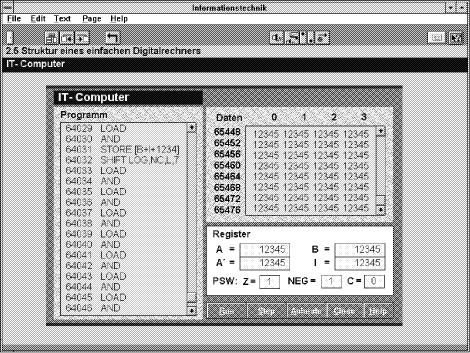 Figure 1: Simulation of an elementary digital computer
Figure 1: Simulation of an elementary digital computerPage 450
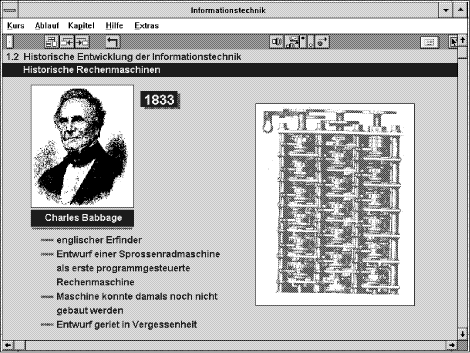 Figure 2: Historical development of computers
Figure 2: Historical development of computers
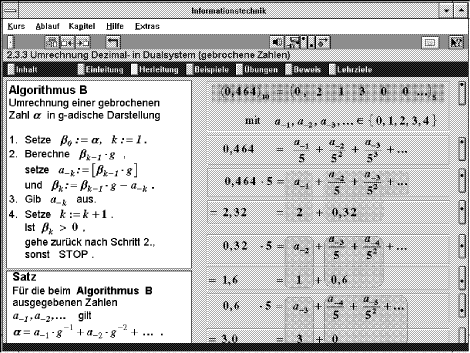 Figure 3: Deduction of a mathematical formula
Figure 3: Deduction of a mathematical formula
Page 451
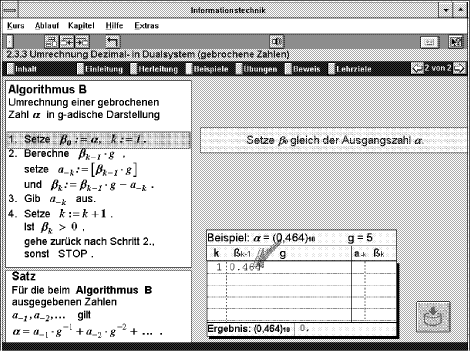 Figure 4: Demonstration of an algorithm
Figure 4: Demonstration of an algorithm
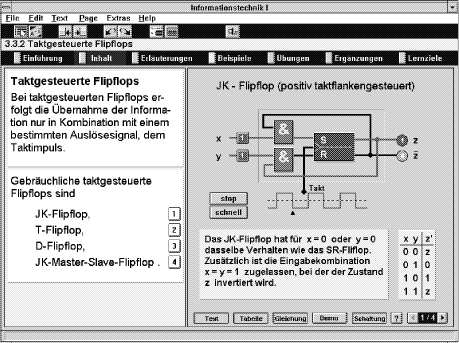 Figure 5: Demonstration of a circuit
Figure 5: Demonstration of a circuit Page 452
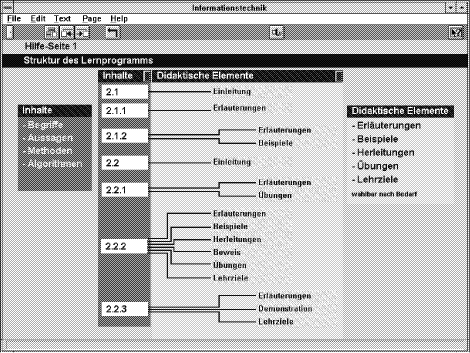 Figure 6: Selection of didactic elements
Figure 6: Selection of didactic elements Appendix: Course Syllabus 1. Semester
* Introduction to the hardware oriented part
- Introduction to the subject area
- Historical development of information technology
- Survey on the structure of digital computers
* Fundamentals
- Digital representation of information
- Coding of ciphers and characters
- Polyadic number systems
- Representation of integer and real numbers
- Structure of a
simple digital computer
- Programming of the simple digital computer
- Logical circuits
- Boolean algebra
* Logical combinatorical circuits
- Circuits with storage elements
- Basic digital circuits
Page 453
- Finite automata
2. Semester
* Processors
- Tasks and functions of a control unit
- Structure of a control unit
- Instructions and addressing
- Microprogramming und instruction implementation
- Program interrupts
- Tasks and functions of an arithmetic unit
- Binary adders
- Binary multiplication
- Binary division
- Binary floating point arithmetic
- Error detection and handling
* Memories
- Tasks and functions of memories
- Memories with random access
- Memories with cyclic access
- Memories with sequential access
- Organisation and structure of memory hierarchies
* Input and output
- Survey on I/O- devices
- Parallel and serial communication with I/O-devices
- Interrupts units and timers
- Direct memory access and I/O- controllers
- Keyboards, CRT-terminals, and printers
- A/D and D/A converters
* Outlook to further computer architectures
- RISC principle
- Transputer
- Distributed systems
- Parallel computers
- Unconventional computer architectures
3. Semester
* Introduction to the software oriented part
- Software in technical systems
- Design and validation of large software systems
- Quality features of Software
* Information and its representation
- Statistical information (Shannon's) theory
- Information as semantic content of messages
- Forms of representation and interpretations
- Transformations of information representations
* Fundamental mathematical notions
- Characters, strings, and formal languages
Page 454
- Predicate logic
- Sets, relations, and functions
* Data structures
- Arrays and mappings
- Sequences
- Graphs and trees
- Organisation and storage of data structures
* Algorithms
- Basic notions
- Design and representation of algorithms
- Correctness
- Complexity
* Syntax and semantics
- Grammars, BNF, and syntax diagrams
- Context conditions (static semantics)
- Semantical models
- Language translation
4. Semester
* Fundamental notions of programming
- Functions
- Case selection
- Non-deterministic selection
* State oriented programming
- On the notion "state"
- Pre- and post- conditions
- Program variables
- Iteration
- Procedures
* Concurrency, parallelism, and distribution
- Control of technical processes
- Data parallelism
- Control parallelism
- Fair co- operation
of processes
- Deadlocks
- Concurrency and synchronisation
* Structuring of programs
- Modularity
- Stepwise refinement
- Composition of modules and processes
- Strictly and loosely coupled communication
* Organisation of computer operation
- User and access rights
- Layers of system objects
- Memory organisation
- Process management
Page 455
|